
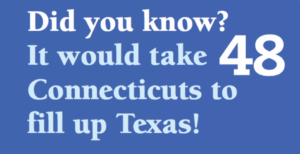 Connecticut is the third smallest state in the United States. It is in the region called New England.
Connecticut is the third smallest state in the United States. It is in the region called New England.
Connecticut is a small state with big geographical features. It has mountains, the ocean, rivers, and lakes. There are forests with hiking trails, quarries, and mineral deposits. There are farms all over the state.
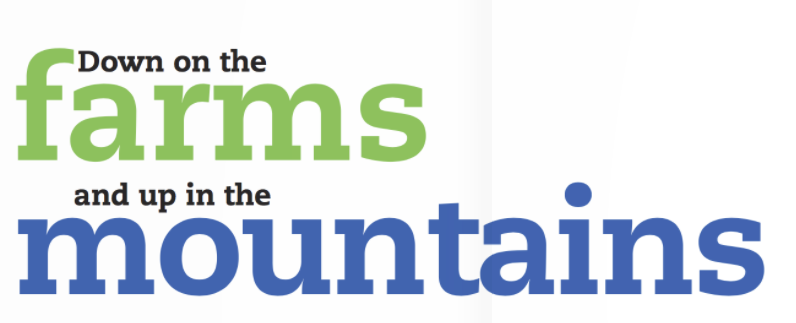
When relatives come to visit, they might arrive at Bradley International Airport. The airport is in the town of Windsor Locks, close to Massachusetts. Or, they might enter Connecticut from its borders. Massachusetts is to the north. New York is on the west. Rhode Island is to the east. If they are coming from the south, they will have to arrive on a boat. The entire southern border is Long Island Sound.

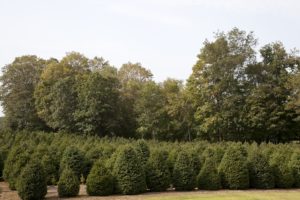
Christmas tree farm in Connecticut. Carol M. Highsmith, Library of Congress
When you leave the airport, you will pass many working farms. There are beef, dairy, hay, fruit, and even Christmas tree farms in Connecticut. At one point, tobacco was one of Connecticut’s major crops. The Connecticut Farmland Trust protects Connecticut farmlands.
Are you interested in hiking and skiing? The largest mountain ranges are in the 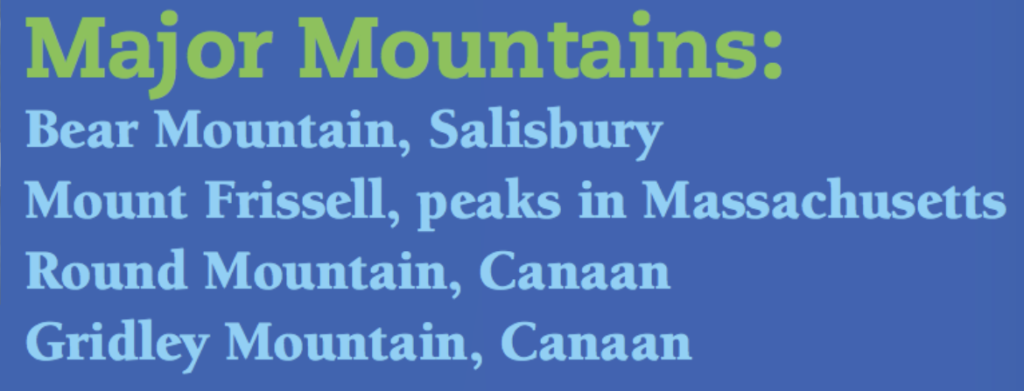 northwest part of the state. Bear Mountain and Mount Frissell are part of the Taconic Mountain Range. They are the largest and highest mountains in the state.
northwest part of the state. Bear Mountain and Mount Frissell are part of the Taconic Mountain Range. They are the largest and highest mountains in the state.

More than 300 million years ago, Connecticut was still forming. Large chunks of land pushed skyward to form mountains. Then the land pulled apart to create the Connecticut River Valley. Lava erupted and formed a rock called basalt. You will also find granite, brownstone, and other types of rocks. These minerals were important to industry. Today we see those rocks in buildings and stone walls.
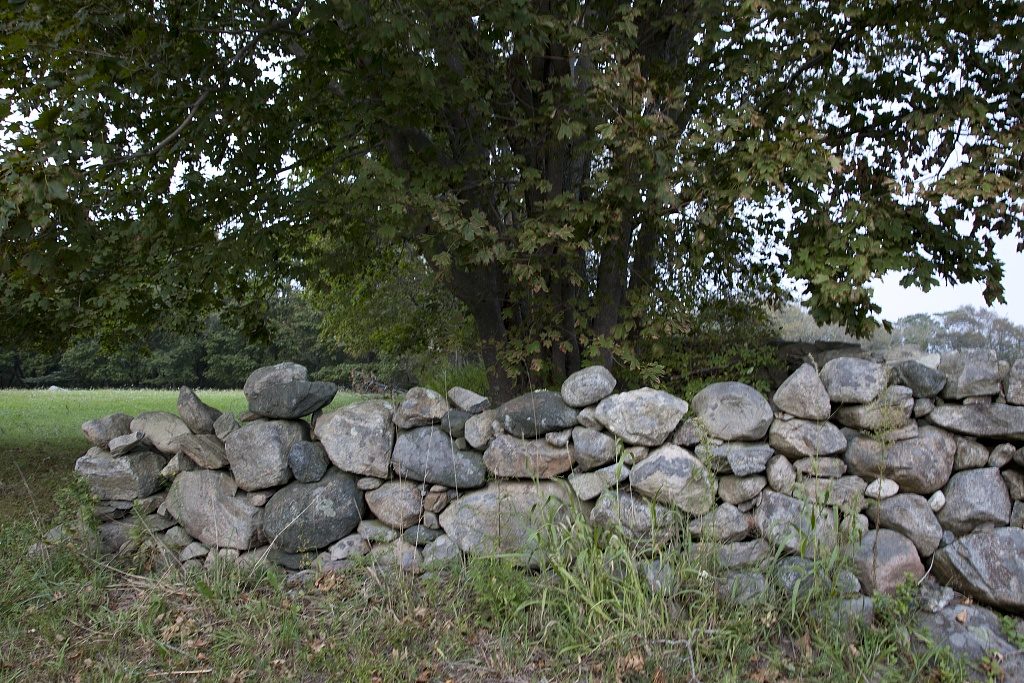
Stone wall in Connecticut. photo: Carol M. Highsmith, Library of Congress
Can you picture dinosaurs in Connecticut? They lived here until the ice age 20,000 years ago. Humans did not live here until about 10,000 years ago.

GLOSSARY
Basalt a dark gray volcanic rock
Border the boundary between two places
Geographical having to do with the natural parts of an area
Industry the set of businesses that provide a particular product or service, especially
Lava melted rock from a volcano
Quarries places where large amounts of stone are dug out of the ground

The entire southern border is Long Island Sound. That water is salty, but do not expect large waves in Connecticut. Long Island protects Connecticut from large waves.
You will find rivers everywhere in Connecticut. Most of them run from the highlands down into river valleys. These rivers empty into Long Island Sound. The largest river is the Connecticut River.
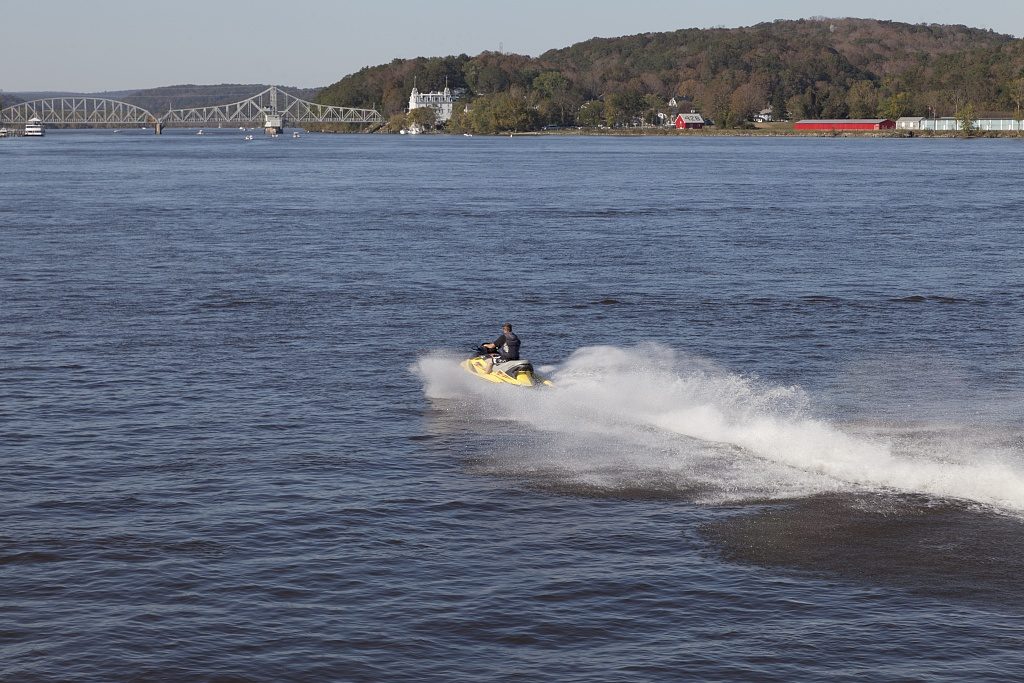
Connecticut River near East Haddam. photo: Carol M. Highsmith, Library of Congress
The Connecticut River does not just stay in Connecticut! It starts in Canada. Then it runs between Vermont and New Hampshire—it is the border. It keeps flowing through Massachusetts and Connecticut.
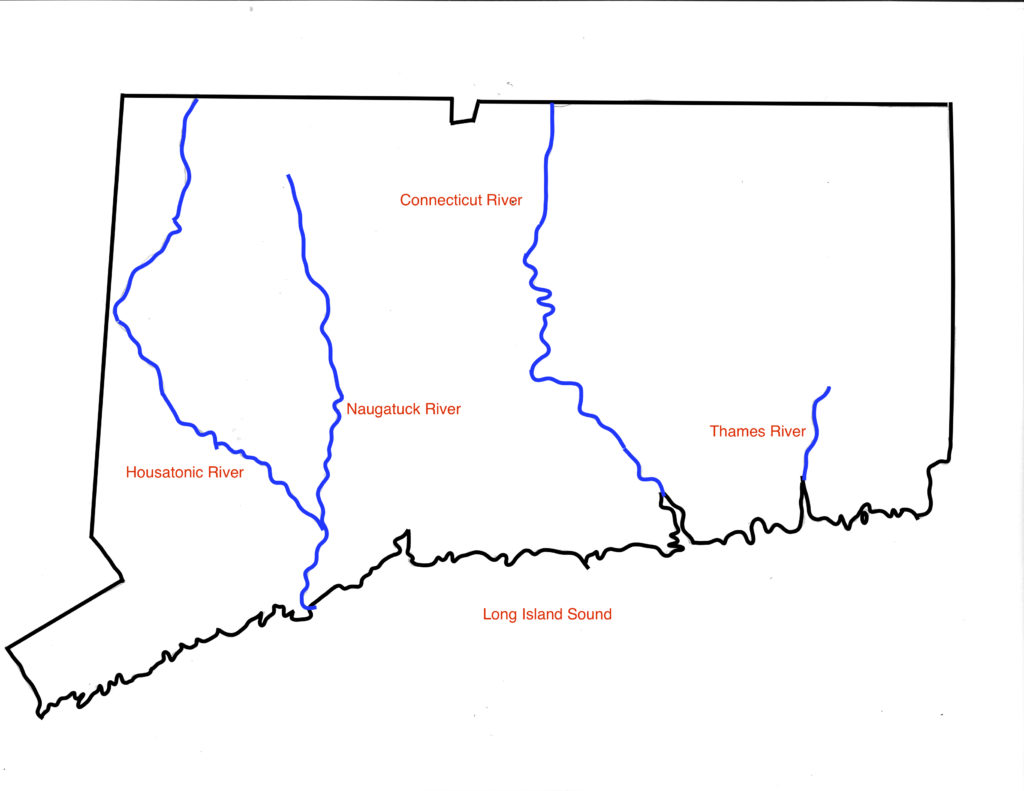 Other major rivers include the Housatonic, the Thames, and the Naugatuck. They all empty into Long Island Sound, too. There are many smaller rivers and brooks. A network of rivers and streams is called a watershed.
Other major rivers include the Housatonic, the Thames, and the Naugatuck. They all empty into Long Island Sound, too. There are many smaller rivers and brooks. A network of rivers and streams is called a watershed.
Rivers were important for early travel and for commerce. That is why you will find many cities and towns like Norwich, Naugatuck, and Hartford next to rivers.
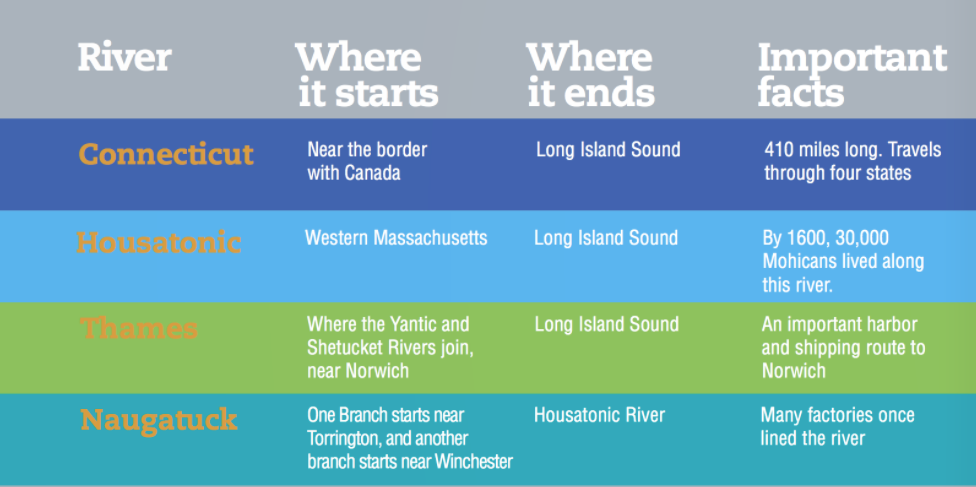
Connecticut has both lakes and reservoirs. Candlewood Lake, Bantam Lake, and Lake Waramaug are all in the western part of the state. You can find lakes near where you live, too. Lakes offer fun opportunities for recreation.
Reservoirs serve a different purpose—they hold water that we drink. Connecticut has several reservoirs all around the state.
GLOSSARY
Commerce buying and selling goods between different places
Highlands land that is higher than surrounding areas
Reservoir a body of water, usually an artificial lake, used to store a large supply of water for use in people’s homes or businesses
Valley an area of low land between hills or mountains, often along a river
Watershed an area where all of the brooks and streams flow into a single river or body of water
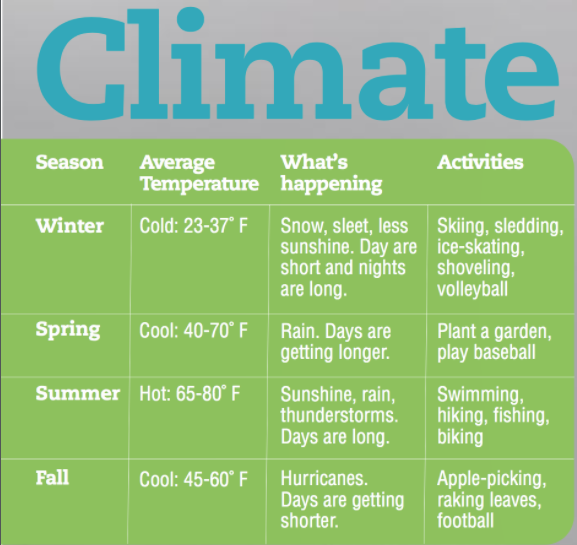
In Connecticut, each of the four seasons is very different from the others. Summers are very hot. Winters are very cold and bring ice and snow.
Many residents like the change in seasons. There are different activities to do in each season. In the fall, we have apples to pick and leaves to rake.
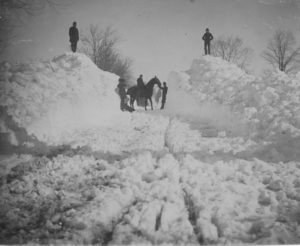
Blizzard of 1888. Fairfield Museum & History Center
Skiers, sledders, and ice skaters love the winter. In the spring, gardeners watch for green sprouts to poke through the soil. In the summer, swimmers splash in rivers, lakes, and Long Island Sound.
Connecticut’s location is the reason for its seasons. Geographers locate a place by latitude and longitude. Latitude marks the distance north or south from the equator. Longitude is the distance east or west from the prime meridian. Connecticut is far north of the equator.
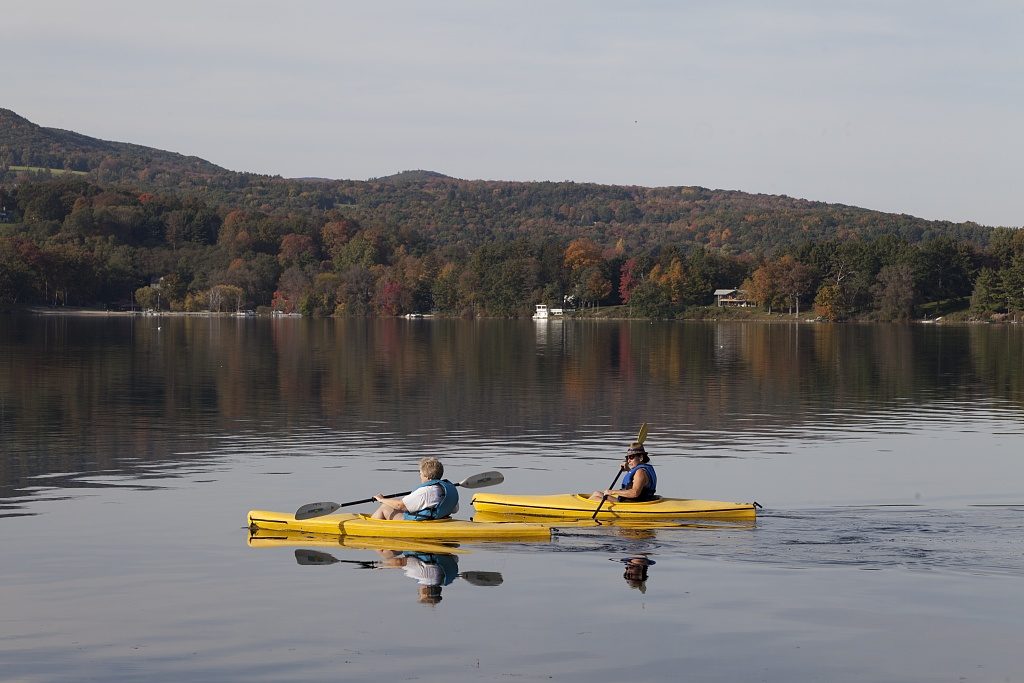
Kayaking in the fall on Wononskopomuc Lake, Lakeville. photo: Carol M. Highsmith, Library of Congress
Connecticut is a small state, but we have many climates! Along Long Island Sound is a “humid subtropical” climate. Summers are hot and often humid. Winters are mild to cold. The northwestern part of the state has mountains. It is colder there, and the climate type is “humid continental.” Humid continental climates have warm summers and cold winters. The southeastern part of Connecticut has an “oceanic climate.” Summers are cooler because of ocean breezes, and winters are cool but not cold.
Climate matters to farmers. Connecticut has a good growing season and enough rain. Farmers grow apples, corn, vegetables, and hay.
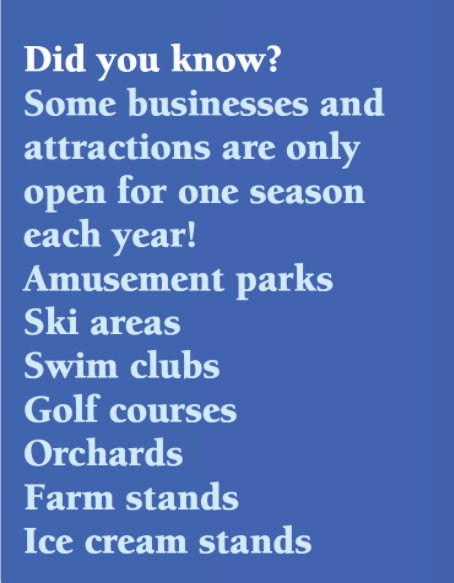 Climate matters to the tourism industry. Ski areas need lots of snow. Country inns want visitors to come see the colorful fall leaves. Campgrounds want long sunny, summer days.
Climate matters to the tourism industry. Ski areas need lots of snow. Country inns want visitors to come see the colorful fall leaves. Campgrounds want long sunny, summer days.
Connecticut’s climate doesn’t matter as much to business and industry, except when a snowstorm means people can’t get to work.
GLOSSARY
Equator an imaginary circle around the earth that is equal distance from the North Pole and the South Pole
Prime meridian an imaginary line that runs from the North Pole to the South Pole through Greenwich, England
Season one of the four periods (spring, summer, fall, and winter) into which the year is divided
Read more stories about Connecticut’s geography HERE



 Connecticut is the third smallest state in the United States. It is in the region called New England.
Connecticut is the third smallest state in the United States. It is in the region called New England.


 northwest part of the state. Bear Mountain and Mount Frissell are part of the Taconic Mountain Range. They are the largest and highest mountains in the state.
northwest part of the state. Bear Mountain and Mount Frissell are part of the Taconic Mountain Range. They are the largest and highest mountains in the state.




 Other major rivers include the Housatonic, the Thames, and the Naugatuck. They all empty into Long Island Sound, too. There are many smaller rivers and brooks. A network of rivers and streams is called a watershed.
Other major rivers include the Housatonic, the Thames, and the Naugatuck. They all empty into Long Island Sound, too. There are many smaller rivers and brooks. A network of rivers and streams is called a watershed.



 Climate matters to the tourism industry. Ski areas need lots of snow. Country inns want visitors to come see the colorful fall leaves. Campgrounds want long sunny, summer days.
Climate matters to the tourism industry. Ski areas need lots of snow. Country inns want visitors to come see the colorful fall leaves. Campgrounds want long sunny, summer days.